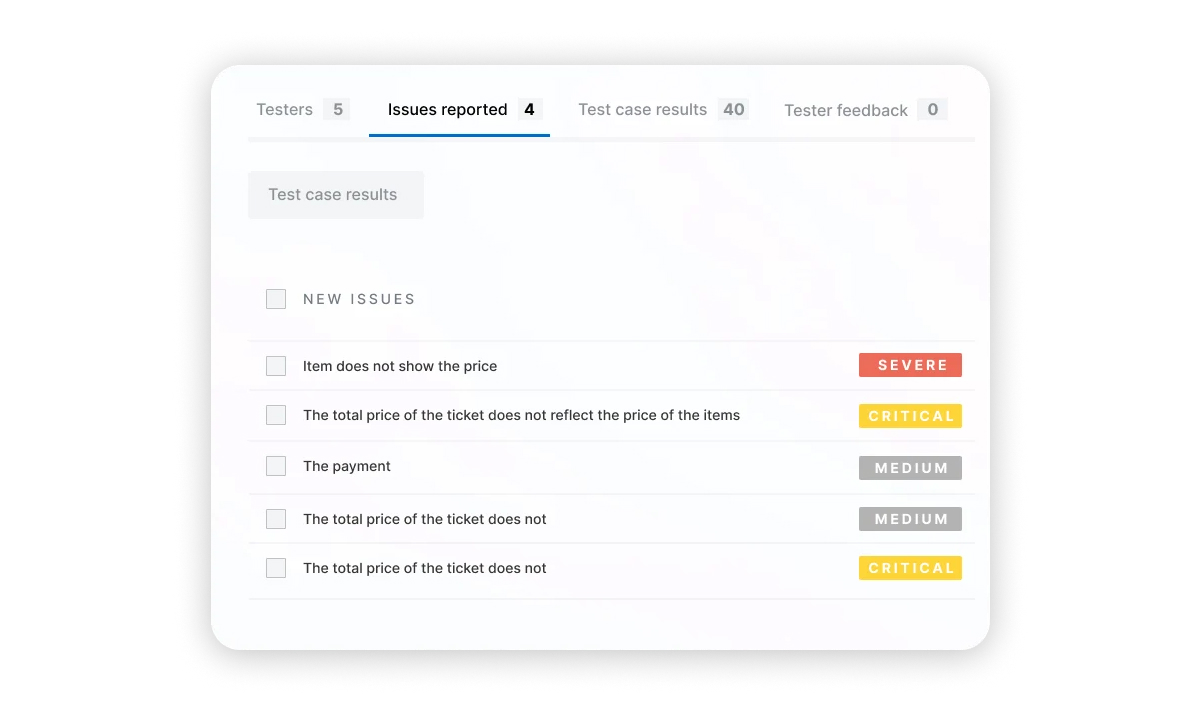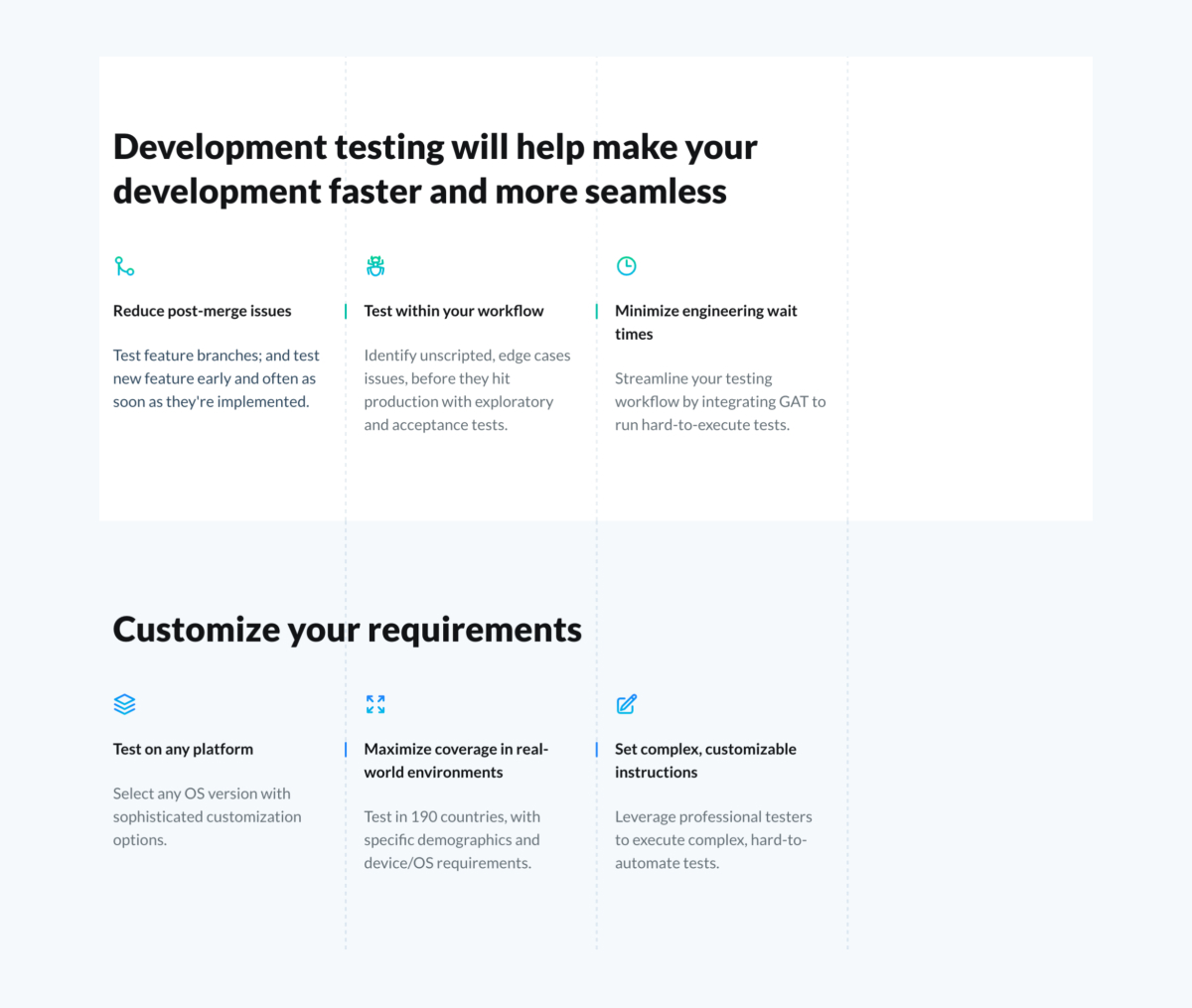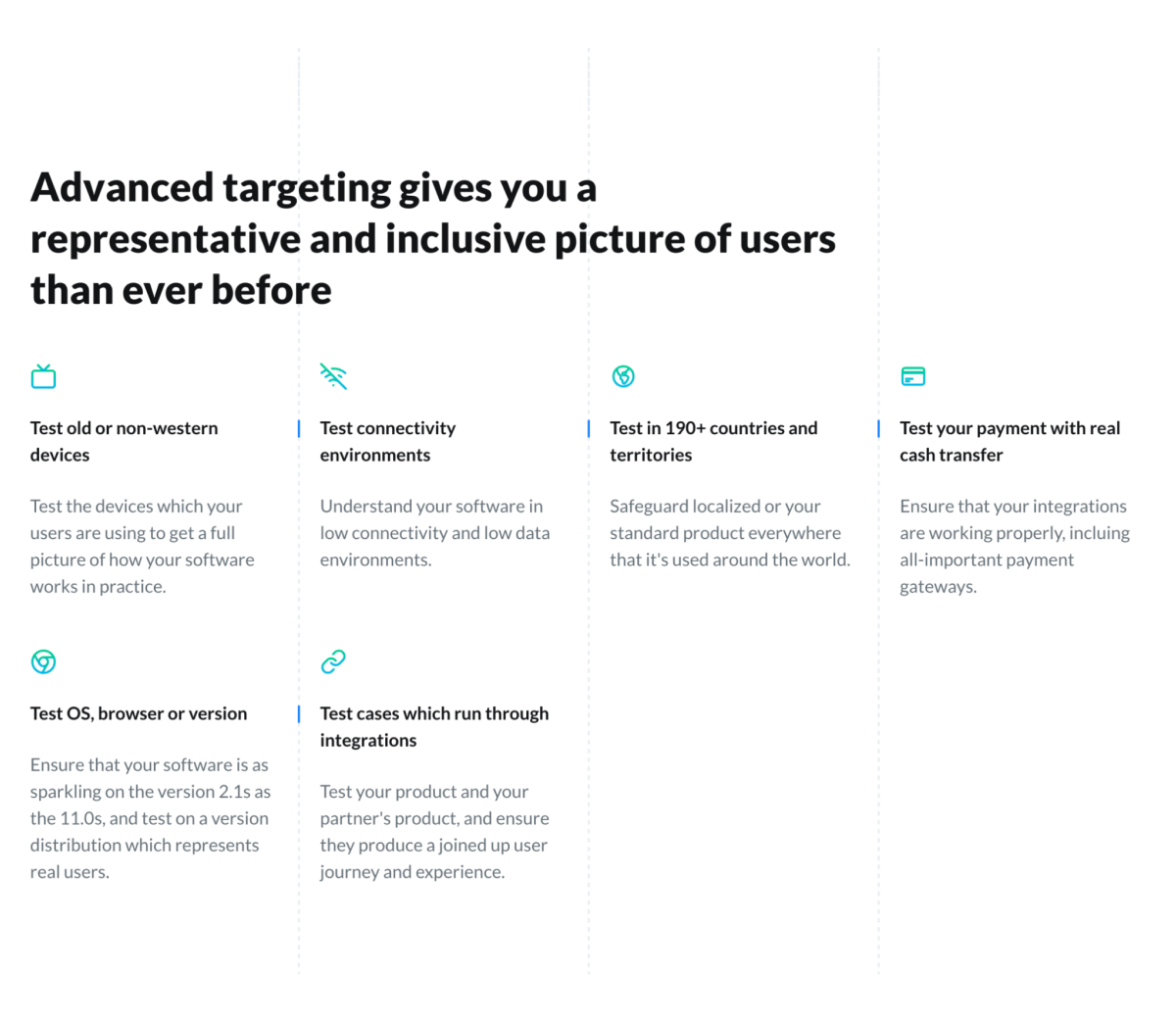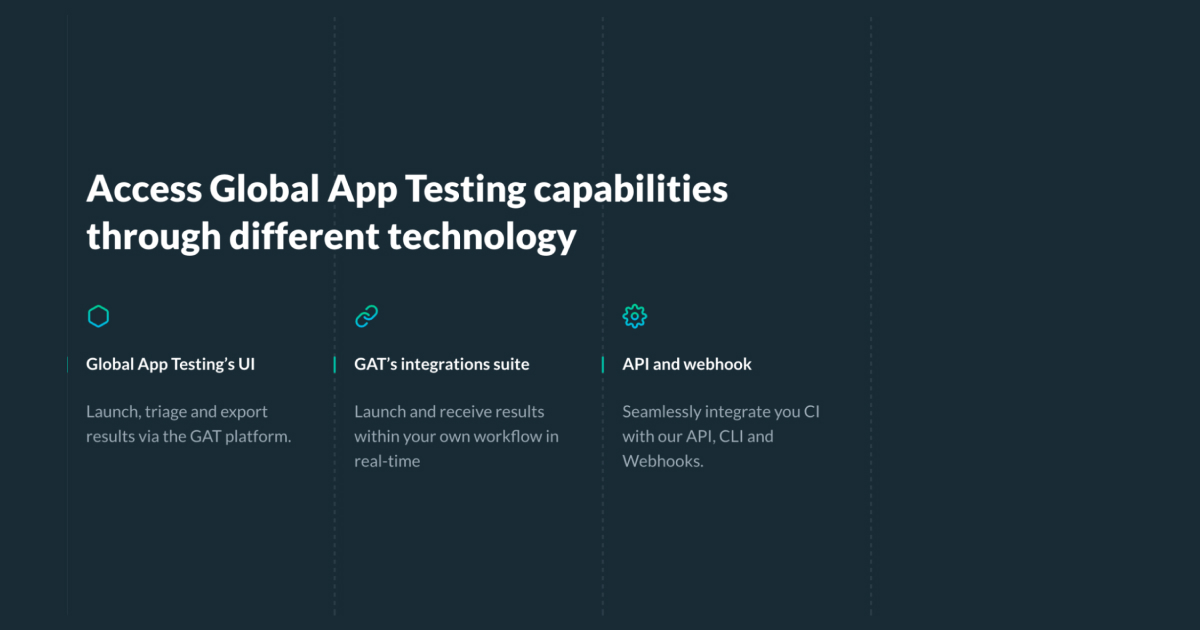-
How we help
- Does my software work?
- Does it work for all users?
- Global Growth Toolbox
- Industries
-
Platform
- Platform
- Integrations
- Browse all test types
- Add-on services
- Pricing
- Resources
On-demand testing - a complete guide
On-demand testing is a testing service available whenever you need it. Fill out the form to the right.
- Understand how our solutions can help you
- Advise on industry best practice
- Get an estimate for how much GAT costs
- Give you a platform demo
- Talk through examples of how we’ve worked with similar companies to yours
Do you need to run tests but don't have time for a rigid schedule? On-demand testing offers a flexible solution that lets you conduct tests whenever you need. It's perfect for handling last-minute projects and unexpected changes. Ready to explore how this works and why it might be the answer to your testing needs? Let's dive in.
What is on-demand testing?
On-demand testing lets you receive test results when you need them - helping you test throughout your development lifecycle. A reliable, always-on attitude to testing creates a more robust development cycle, enabling teams to find and resolve bugs early on.

Furthermore, on-demand testing identifies problems that could be overlooked and which could cause more significant problems down the line.
Why would you need on-demand testing?
The app and software markets are saturated, with over 3.83 million apps available on the iOS store and more than 2.43 million on the Google Play Store. Additionally, there are numerous desktop software programs and web apps released annually, making the competition fierce.
Developers of all sizes, from small startups to industry giants like Microsoft, must test their programs thoroughly before launching them. Many developers handle testing in-house, but an increasing number are turning to on-demand testing for a more efficient and effective solution.
Your finished product must launch without defects or bugs to achieve success.
While some issues may arise post-launch, rigorous on-demand testing during development can significantly minimize these risks.
So, what types of testing are available, and how can this approach benefit you as a developer? Let's explore the different facets of on-demand testing and its advantages.
What are the types of on-demand testing?
Although there are several types of on-demand testing, most fall into two categories:
- Functional testing checks that a program does what it was actually designed to do. It will check that each function of the program behaves as expected and can help verify that the actual behavior matches what the developers hoped for.
- Non-functional – As the name suggests, this type of testing looks at the non-functional aspects of your software. This could include factors such as performance, reliability, and usability and can cover things such as how many people can log in and use at the same time. It checks that your program is fully ready to be released.
1. Functional testing
Functional testing ensures the software behaves according to its requirements and specifications.
Unit Testing involves testing individual components or functions of a software application in isolation. For example, in a calculator app, a unit test might verify that the addition function returns the correct sum of two numbers.
Integration Testing focuses on verifying the interactions between different components or systems. For instance, in an e-commerce app, integration testing might confirm that the shopping cart and payment gateway work together seamlessly.
System Testing involves testing the product as a whole. It doesn't require any coding knowledge, and testers look at whether the product fulfills all the specs defined by the developers. It's usually the final step in any testing process and can include both functional and non-functional testing elements. For example, testing an entire web-based content management system to ensure it handles data correctly and provides a smooth user experience across various scenarios.
2. Performance Testing
Performance testing assesses how the software behaves under different conditions and stress levels.
- Load Testing evaluates how the application performs under expected usage conditions—for instance, testing a website's performance with 1,000 concurrent users.
- Stress Testing simulates extreme conditions to see how the application holds up. An example is testing a banking app's functionality when thousands of transactions are processed simultaneously.
- Scalability Testing checks the application's ability to handle increasing loads. For instance, scaling up the number of users in a video conferencing app to see how the system manages additional demand.
3. Security Testing
Security testing identifies vulnerabilities in the software and ensures its defenses against potential threats.
- Penetration Testing: This testing involves simulating cyberattacks to identify and address weaknesses. For example, it involves exploiting a website's login form to access user accounts without permission.
- Vulnerability Scanning uses automated tools to identify potential security flaws. For instance, scanning a web application for outdated software components with known vulnerabilities.
4. Compatibility Testing
Compatibility testing verifies that the software works seamlessly across various devices, browsers, and operating systems.
- Cross-Browser Testing: Testing an application on different browsers (e.g., Chrome, Firefox, Edge) to ensure consistent behavior and appearance across all of them.
- Device Testing involves checking the software's compatibility with different devices (e.g., smartphones, tablets, and desktops). For example, a mobile app can be tested on various phone models to ensure consistent performance.

5. User Acceptance Testing
User acceptance testing (UAT) involves the end-user or client verifying that the software meets their needs and expectations.
- Alpha Testing is performed by the internal team, often including developers and quality assurance engineers. For example, testing a new social media app internally before releasing it to a select group of users.
- Beta Testing involves a select group of external users testing the software before its official release. For instance, a new version of a video game is tested by enthusiastic gamers who provide feedback on gameplay and functionality.
6. Regression Testing
Regression testing ensures that new changes do not adversely affect existing functionality.
- Automated Regression Testing: Using automated scripts to run a series of tests whenever a new feature is added. For example, a travel booking site might run automated tests to ensure that adding a new search feature doesn't break existing booking functionality.
- Manual Regression Testing involves testers manually running tests to verify that previous functionality still works as expected. For instance, testers might manually check different features of a content management system after a new plugin is added.
Advantages of on-demand testing
On-demand testing offers several benefits for those looking to optimize their quality assurance processes and improve software releases. Here are some key advantages:
1. Controlled costs
On-demand testing helps manage costs by minimizing the risk of delayed releases and potential budget overruns. By outsourcing testing, you avoid the expense of maintaining a dedicated in-house QA team and the risk of stretching your own staff too thin.
2. Flexible schedule
Timing is crucial in software development, especially in competitive markets. On-demand testing services allow you to conduct testing according to your schedule, allowing your team to focus on development while testers handle the quality assurance process. This can help ensure your project stays on track for its planned release.
3. Tailored solutions
On-demand testing can be customized to meet your specific needs, whether you require a standard testing approach or a more specialized solution. Test providers can work closely with you to design testing processes that align with your objectives and address unique requirements.
4. Transparency and objectivity
By using an external testing service, you gain an additional layer of transparency in your quality assurance process. Independent testers provide an unbiased perspective and adhere to industry standards, such as those set by the Anti-Malware Testing Standards Organization (AMTSO), to ensure thorough testing and accurate results.
5. Access to testing expertise
Partnering with an on-demand testing provider, such as GAT, grants you access to experienced testers with diverse backgrounds and advanced knowledge of testing methodologies. Their daily testing experience can uncover issues that in-house teams might overlook and offer valuable insights into potential improvements.
6. Scalability and resource optimization
On-demand testing services can easily scale to accommodate projects of any size, allowing you to access the necessary resources without committing to long-term contracts. This scalability helps you manage projects efficiently and allocate resources where needed most.
7. Global reach
For applications with international markets, on-demand testing services offer a global network of testers who can provide feedback on localization, compatibility, and cultural nuances. This ensures your software performs well across different regions and meets the expectations of diverse audiences.
8. Reduced risk
By outsourcing testing, you can minimize risks associated with software development, such as security vulnerabilities, usability issues, and performance concerns. External testers bring a fresh perspective and expertise in identifying these risks, helping you deliver a more robust product.
Why choose Global App Testing for your on-demand testing needs?
Global App Testing is a leading on-demand testing company with a proven track record of offering comprehensive testing solutions. With our extensive experience and resources, we provide swift and efficient testing for any product you've developed.
Here are some key benefits of choosing GAT:
- Extensive global coverage: With over 90,000 experienced testers in more than 190 countries, GAT ensures your software works seamlessly in all the countries you operate in and beyond.
- 24/7 Scalability: Testing is available 24 hours a day, 365 days a year, enabling you to schedule tests whenever needed and receive results quickly.
- Diverse testing options: A combination of manual crowdtesting and on-demand testing, or either method alone, for delivering accurate results and high-quality products.
- Integration with popular tools: Seamlessly integrate with popular tools like GitHub, TestRail, and Jira, allowing you to send tests and receive results directly within your workspaces.
- Comprehensive testing services: From exploratory to localization testing, Global App Testing provides a range of testing services to meet your specific needs.
- Speedy results and clear reports: Receive fast results and easily understandable reports, allowing you to address bugs or defects efficiently and maintain your workflow.
- Trusted by major companies like Microsoft, Meta, Canva, and BBC, highlights our reputation and reliability.
- Secure and reliable: With enterprise-level security measures and ISO certification, your data and work are well-protected.
Global App Testing’s On-Demand testing platform
Understanding that your schedule is critical, Global App Testing offers fast, on-demand testing platform tailored to your needs. With just a few clicks, you can easily create and manage tests yourself or have Global App Testing run them on your behalf.
Our system provides near real-time results integrated into your CI/CD workflow. This means you can prioritize critical issues and address minor ones later, ensuring no delays in your development schedule.

Additional benefits of working with Global App Testing:
- Full bug reports within 4-6 hours.
- A quick ramp-up of testing whenever needed.
- Test results in under two hours.
- Seamless integration with DevOps tools like Jira, GitHub, and TestRail.
- AWS-hosted platform for enhanced security.
- ISO-certified security standards.
- Localized testing for different regions, languages, and cultures.
Ready to improve your software quality? Choose Global App Testing for reliable, efficient, and comprehensive on-demand testing.
Contact us today and schedule a free demo of our platform today!
Keep learning
Web app testing - everything you need to know
6 best QA blogs to follow
A guide to outsourced software testing
Need help with QA testing?
We’d love to give you a personal demo of our platform. Find out how we manage, execute and analyse test results to help you release high quality software anywhere in the world.

-11547.jpg)